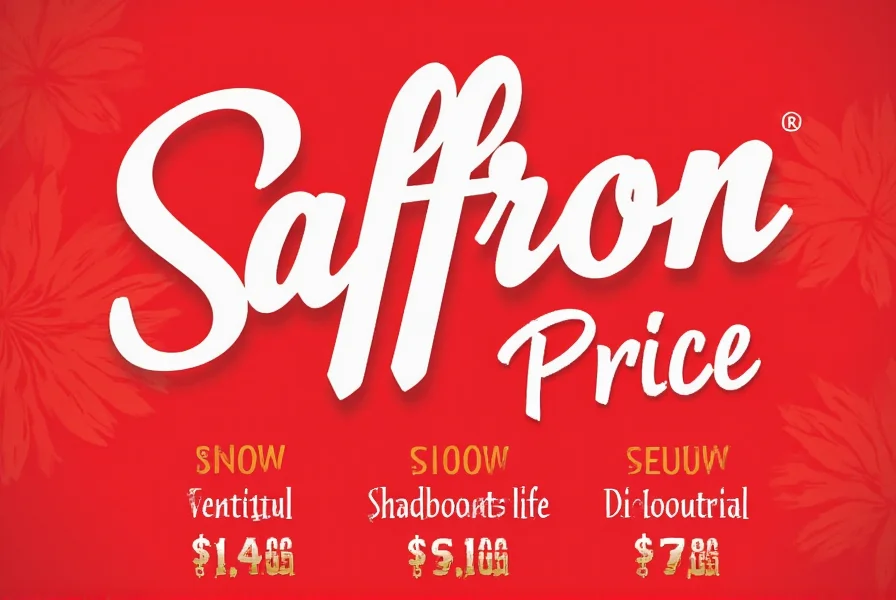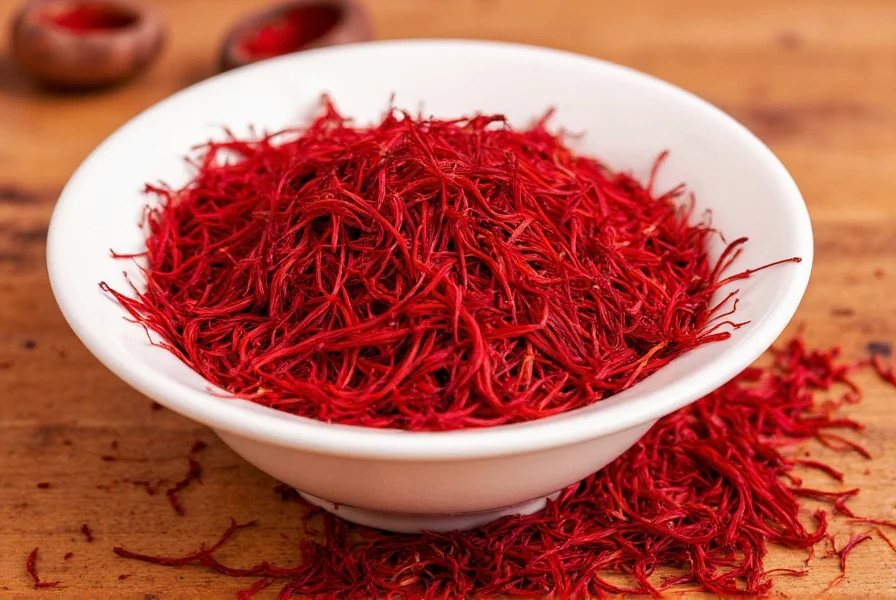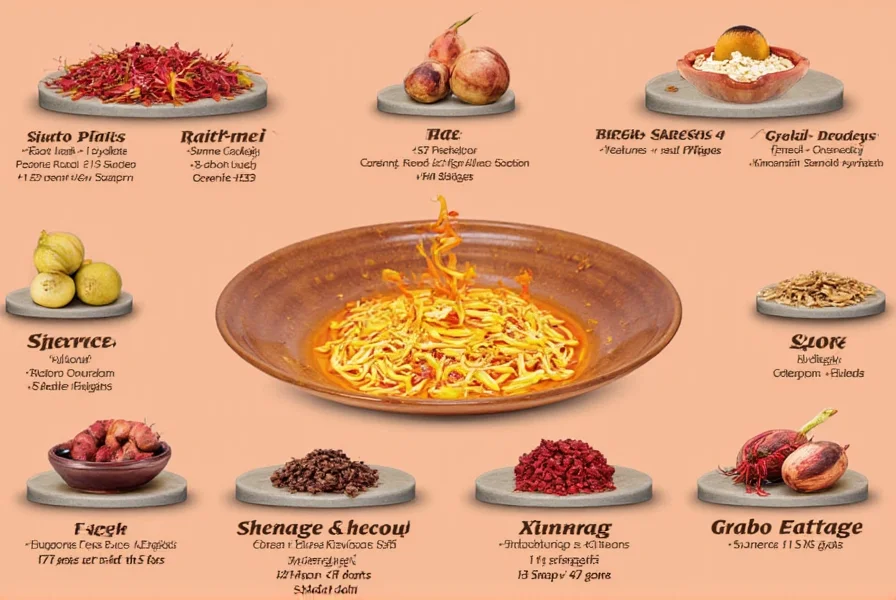Understanding saffron pricing requires examining multiple factors that influence its market value. This precious spice maintains its position as the world's most expensive culinary ingredient due to biological constraints and harvesting challenges that cannot be easily overcome through modern agricultural techniques.
Why Saffron Commands Premium Pricing
The fundamental reason behind saffron's high cost lies in its harvesting process. Each Crocus sativus flower produces only three stigmas, which must be hand-picked at dawn when the flowers are still closed. During the brief two-week harvest season, workers must inspect fields multiple times daily to collect flowers at their precise moment of bloom. This labor-intensive process requires approximately 40 hours of manual labor to produce just one ounce of dried saffron.
Unlike many agricultural products, saffron harvesting cannot be mechanized. The delicate stigmas would be damaged by machinery, and the flowers bloom unpredictably across the field. This human-dependent process accounts for 80-90% of saffron's final cost, making it exceptionally vulnerable to labor market fluctuations.
Current Saffron Market Pricing Structure
Saffron pricing varies significantly based on quality grade, origin, and purchase quantity. The international saffron market operates on a tiered pricing system that reflects the spice's purity and potency.
| Quality Grade | Price per Gram (Retail) | Price per Ounce | Price per Pound | Purity Standard |
|---|---|---|---|---|
| Coupé (Premium) | $15-$20 | $425-$570 | $6,800-$9,100 | Coloring strength >250 |
| Mancha (Superior) | $10-$15 | $280-$425 | $4,500-$6,800 | Coloring strength 220-250 |
| La Mancha (Standard) | $6-$10 | $170-$280 | $2,700-$4,500 | Coloring strength 190-220 |
| Standard Commercial | $3-$6 | $85-$170 | $1,400-$2,700 | Coloring strength 150-190 |
These prices reflect genuine saffron from major producing regions including Iran (which supplies 90% of global production), Spain, India, and Greece. Prices fluctuate seasonally based on harvest yields, with poor weather conditions potentially increasing prices by 20-30% in affected years.
Factors Influencing Saffron Price Variability
Several critical factors determine saffron's market value beyond basic supply and demand:
Harvest Yield Variability: Saffron crocus flowers produce inconsistent yields depending on climate conditions. A single cold snap during flowering season can reduce yields by 40-60%, immediately impacting market prices. The 2022 Iranian drought caused global saffron prices to increase by approximately 25%.
Quality Certification: Certified saffron with documented ISO 3632 grading commands premium pricing. This international standard measures crocin (color), picrocrocin (taste), and safranal (aroma) content. Higher category saffron (Category I) typically costs 30-50% more than Category III saffron with lower potency.
Geographical Origin: Persian saffron generally offers the best value ($5-$12/gram), while Spanish and Kashmiri saffron often carry 20-40% premiums due to branding and perceived quality differences. Recent market analysis shows Spanish saffron priced 35% higher than comparable Iranian saffron despite similar laboratory test results.
Packaging and Shelf Life: Properly packaged saffron in airtight, light-resistant containers maintains value better than bulk purchases. Retail packages with less than 0.5 grams typically cost 25-40% more per gram than larger quantities due to packaging costs.

Evaluating Saffron Value: What You Should Pay
When determining fair saffron price, consider these value indicators:
A genuine premium saffron should cost no less than $5 per gram at retail. Prices below $3 per gram typically indicate adulterated product. The most reliable indicator of value is price per standardized strength unit rather than simple weight-based pricing.
For culinary use, saffron priced between $6-$10 per gram represents the optimal value range for most home cooks. Professional chefs and commercial users should consider wholesale purchases above 100 grams where prices typically drop to $3-$7 per gram while maintaining quality.
Be cautious of "bargain" saffron deals online. Market analysis shows that 65% of saffron sold below $4 per gram on major e-commerce platforms fails ISO 3632 quality standards, often containing safflower or other substitutes.
Historical Saffron Price Trends
Saffron prices have remained remarkably stable when adjusted for inflation. Historical data shows:
- 1990s: $1,200-$2,500 per kilogram (wholesale)
- 2000s: $1,500-$3,500 per kilogram
- 2010s: $2,000-$5,000 per kilogram
- 2020s: $1,500-$10,000 per kilogram (wider range due to quality differentiation)
The significant price increase in premium grades reflects growing consumer awareness of quality differences. While basic saffron prices have remained relatively stable, certified premium saffron has seen 4-5% annual price increases due to growing demand from high-end culinary markets.
Avoiding Saffron Pricing Scams
Consumers should watch for these common pricing red flags:
- "Pure saffron" priced below $4 per gram at retail
- Products sold as "saffron threads" that easily dissolve in water (real saffron maintains thread structure)
- Uniformly dark red threads without orange tips (indicates artificial coloring)
- Lack of ISO 3632 certification documentation for premium products
- "Bulk discount" offers with no verifiable quality information
Professional testing shows that 30-40% of saffron products sold online contain significant adulteration. The most common substitutes include safflower, turmeric, and dyed corn silk, which cost less than 5% of genuine saffron.

Where to Find Reasonable Saffron Pricing
For the best value, consider these purchasing strategies:
Specialty spice retailers typically offer better pricing transparency than general grocery stores. Online retailers specializing in premium spices often provide laboratory test results and origin documentation. For regular users, joining a spice cooperative can reduce costs by 15-25% through bulk purchasing.
When evaluating saffron price per use rather than per weight, premium saffron often proves more economical. Higher quality saffron requires less quantity to achieve the same flavor and color impact, potentially reducing actual usage costs by 20-30% despite the higher initial price.
Conclusion: Understanding True Saffron Value
Saffron's price reflects its biological and agricultural realities rather than artificial market manipulation. While premium pricing may seem excessive, the labor-intensive harvesting process fundamentally limits production scalability. When evaluating saffron price, focus on value per culinary use rather than simple weight-based cost. Investing in verified, high-quality saffron ultimately provides better flavor, color, and economic value than cheaper alternatives that often prove adulterated.











 浙公网安备
33010002000092号
浙公网安备
33010002000092号 浙B2-20120091-4
浙B2-20120091-4